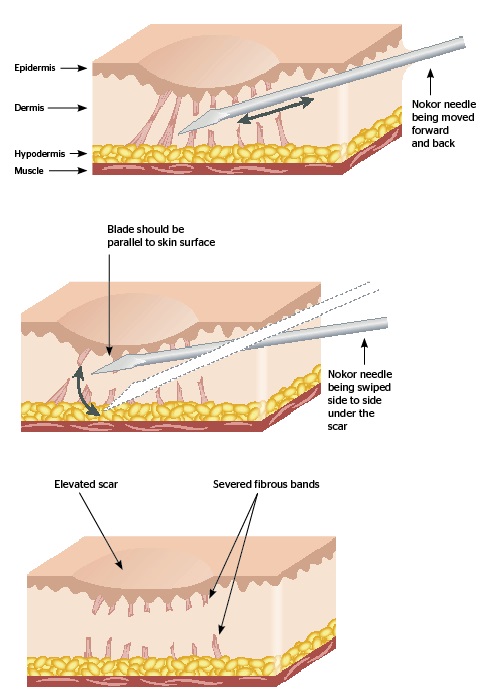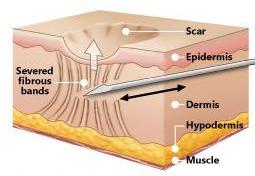SUBCISION
Subcision is one of the treatment options for acne scarring performed by Dr McCann.

Subcision Acne Scar Treatment Procedure
Acne scars are permanent textural changes and indentations that occur on the skin as a result of severe acne.
In severe acne, large pus-filled spaces known as acne cysts are formed. These cysts destroy skin tissue which is not replaced during the healing process. When the cyst eventually empties and the area heals, it usually leaves behind an indentation (or scar) on the face. On the chest and back the scarring can be lumpy (known as “hypertrophic” or “keloid” scarring).
Acne scarring on the face appears as damage to the skin texture with depressed (or indented) areas of various sizes. On the back and chest, scars tend be raised and lumpy. Scars are usually a normal skin colour. Some keloid scars can remain red for many years.
- Subcision
This method uses a needle or cannula (which is a long slightly blunted needle), to break up scar tissue under the skin. This form of scar revision is ideal for tethered scars, rolling scars and areas of uneven texture that may be more noticeable with talking or smiling. This treatment requires considerable experience and skill, and is only performed personally by Dr McCann who has more than 10 years experience in cannula use with dermal fillers and 4 experience with cannula use in non surgical thread use, and has attended advanced facial anatomy training in order to safely perform this procedure. 2-3 treatments may often be required.
The ultimate goal for treating acne scars is improvement rather than complete disappearance or “cure”. The degree of improvement is dependent on the scar type and the skin colour of the individual.

What is Subcision Acne Scar treatment?
https://dermnetnz.org/topics/subcision/
Any surgical or invasive procedure carries risks. Before proceeding, you should seek a second opinion from an appropriately qualified health practitioner.

